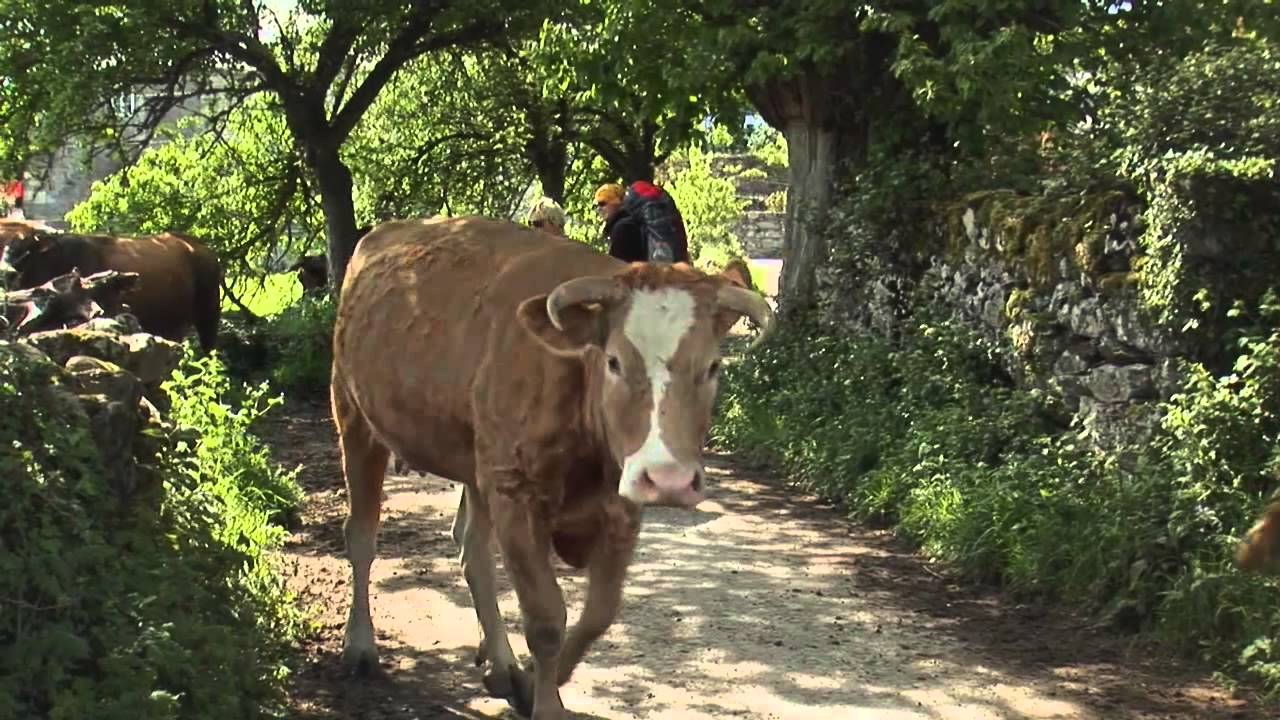The 2014 documentary, Walking the Camino: Six Ways to Santiago
, has just come to cinemas here. My understanding is that this is a not-for-profit documentary by Lydia Smith who walked the Camino in 2008. She managed to get people walking the Camino to be part of this film. The film has been edited down from about 300 hours of filming. The half-dozen people who are followed in the film include an American, Canadian retirees (a widower and the Episcopal/Anglican priest who presided at the funeral), someone from Denmark, another from Brazil looking to turn her life around, someone who chose the Camino for its physical challenge, and a single-mum and her son, doing it is as a devotional pilgrimage.
One of the surprises for me, walking the Camino, was just how magnificently beautiful the Camino is. This documentary, I think, over-eggs that. In reality, there are miles upon miles of boring parts, ugly areas, and parts where you walk on the side of, or on, a modern road or highway.
Another surprise in my walking of the Camino was how physically hard it is. I am reasonably fit, am used to New Zealand’s great outdoors, and had followed a special training course for 12 weeks, but still I found the Camino strenuous, and the blisters an issue. Deaths, accidents, and rescues are not unknown – even in the time I was walking. Many people give up; and many I met were on their second attempt. I think the documentary presents the people upset, struggling physically and mentally, but it may not be fully representing the difficulties that they have gone through that results in that state – maybe because it is difficult to get a camera crew to such more physically-demanding parts.
Graeme Tuckett reviewed the movie, and some of my remarks in the previous paragraphs may help to explain why he panned it, giving it merely ★½. He now actively dislikes “prosperous westerners on spiritual quests”, and sees the movie as “A self-help manual in $500 boots.”
We must have watched different movies! Sam, the Brazilian woman in her thirties, had stopped her medication for her clinical depression and had just left behind everything she knew in Rio de Janeiro; all she had was a one-way ticket to Spain. Tomás, far from walking “in $500 boots” is seen being given someone else’s shoes. Tatiana, the French 26 year old single mother, pushing a pram with her three-year-old son, is not my image of a “prosperous westerner”.
Far from being “prosperous westerners on spiritual quests”, when I walked the Camino I found people with a wide variety of motivations. A large proportion were retired. The costs were far less than just staying at home for pretty average-income people.
In the documentary, I began to be intertwined with the stories of these pilgrims, and would be interested in knowing what happened to them following this, and how they are now…
I do have one concern. The advertising for this film includes the line, “Can one film motivate you to walk 500 miles?” On the Camino I found many, many people who were there because of a film (many Americans are there because of the movie The Way, many French are there because of a comedy), or a book (Germans – a comedian’s account; South Americans – Paulo Coelho; Koreans – a best-selling love story set on the Camino)… Some early parts of my walk had villages that were not prepared for the numbers that increasingly walk this way (food and accommodation).
So enjoy the documentary. [Someone who has walked the Camino may have a momentary distraction when some places come out of sequence]. Sure, I encourage people to consider walking the Camino, but I would hope that not an inordinate percentage of those who see the film are “motivated to walk these particular 500 miles” (my early paragraphs are part of balancing that consideration).
This is a very good film (sure, not a great, unmissable one). Graeme Tuckett’s review needs to be balanced: ★★★½
If you appreciated this post, consider liking the liturgy facebook page, and/or signing up for a not-very-often email, …





Thanks for your thoughtful review. When I walked the Camino last year, none of the people fit Tuckett’s caricature. Not everyone was exactly clear on why they were making the journey, but most had a sense that the Way was an act of giving over to whatever it wanted to say to them. I enjoyed the film, even though it couldn’t hope to register the true range of diversity of pilgrims in terms of either intentions or learnings. Each person’s Camino is in many ways unique to him or her. I am grateful for the amazing people I met on the Camino (described in my blog posts for April & May, 2014).
Thanks, Jim. I will look through your posts. I hope you are appreciating my posts on the Camino. Blessings.
Thank you, Bosco, for the link to your Camino posts. They are marvelous, and rang true for me. Fascinating list of pilgrims you met. And great photos. I memorized “Dum Pater Familias” and sang it when I needed a lift. Ultreia!
Is this the tune you sang, Jim? Do we have the actual tune? Blessings.
Yes, it is pretty much the same tune, but a bit different rhythmically and with considerably more melismas. I will send you my transcription of the version I got from the Philip Pickett/New London Consort “Pilgrimage to Santiago” CD. It’s a lot easier for solo singing.
Great, Jim. Looking forward to that version. Blessings.